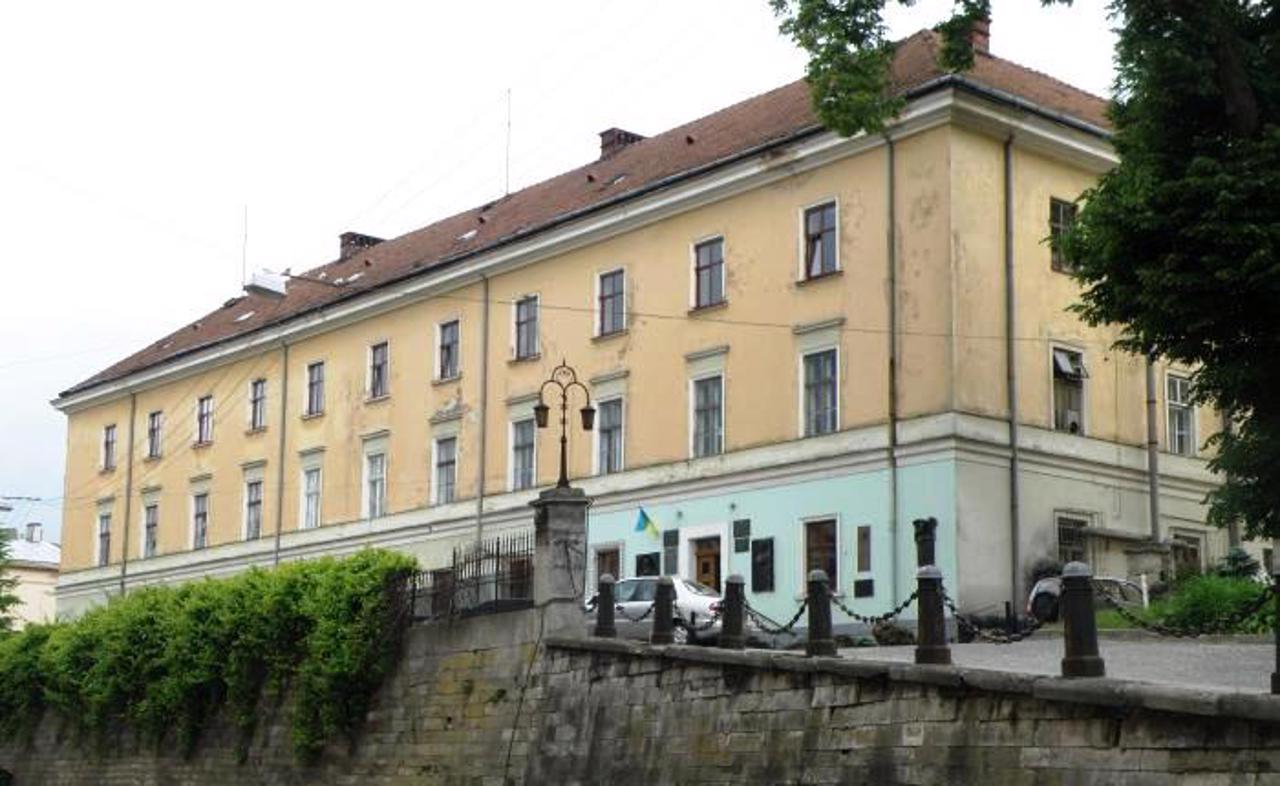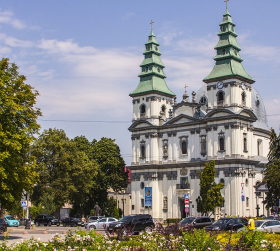Functional temporarily unavailable
Attractions of Ukraine
Attractions region
Attractions Lviv region
Attractions Lviv district
Attractions Lviv
Jesuit Collegium (LNU Museum Complex)
Jesuit Collegium (LNU Museum Complex), Lviv
Architecture
Museum / gallery
General information about Jesuit Collegium (LNU Museum Complex) (Lviv)
The three-story building of the Jesuit Collegium in Lviv was built in 1839-1842 in the style of classicism according to the project of the architect Fidelis Shtadler. After the banning of the Jesuit order, barracks were located in the premises for a certain time. In 1851, the building was transferred to Lviv University.
Currently, in the premises of the former Jesuit collegium, the biological and geological faculties of LNU, as well as the Museum complex of the university, which includes the Zoological Museum, the Paleontological Museum, the Mineralogical Museum and the Museum of Ore Formations.
The Zoological Museum of LNU is one of the oldest university museums in Europe ...
The three-story building of the Jesuit Collegium in Lviv was built in 1839-1842 in the style of classicism according to the project of the architect Fidelis Shtadler. After the banning of the Jesuit order, barracks were located in the premises for a certain time. In 1851, the building was transferred to Lviv University.
Currently, in the premises of the former Jesuit collegium, the biological and geological faculties of LNU, as well as the Museum complex of the university, which includes the Zoological Museum, the Paleontological Museum, the Mineralogical Museum and the Museum of Ore Formations.
The Zoological Museum of LNU is one of the oldest university museums in Europe - it was founded back in 1784 as the Cabinet of Natural History. About 10,000 exhibits in four halls represent the animal world of all continents and all water areas of the globe. The halls are equipped with multimedia panels that allow you to hear the songs of birds and see the life of animals in their natural environment.
The Paleontological Museum of LNU exhibits plant and animal remains in the form of fossils, which tell about the development of life on the planet. The museum funds include more than 18,000 paleontological and geological specimens discovered in deposits of different ages on all continents.
The mineralogical museum of LNU named after academician Yevhen Lazarenko was founded in 1852. His collection includes giant crystals of apatite from Transbaikalia, giant crystals of morion and feldspar from chamber pegmatites of Volyn, pyrites from the Berezivka gold ore deposit in the Urals, unique drusen aggregates of smoky quartz from the Urals, native sulfur from the Shor-Su deposit in Central Asia, samples meteorites
The Museum of Ore Formations of LNU exhibits various ores from more than 500 deposits of Ukraine and the world.
Триповерхова будівля єзуїтського колегіуму у Львові збудована у 1839-1842 роках у стилі класицизму за проєктом архітектора Фіделіса Штадлера. Після заборони ордену єзуїтів у приміщенні певний час розташовувалися казарми. У 1851 році будівлю було передано Львівському університету.
Нині в приміщенні колишнього єзуїтського колегіуму біологічний та геологічний факультети ЛНУ, а також Музейний комплекс університету, що включає Зоологічний музей, Палеонтологічний музей, Мінералогічний музей та Музей рудних формацій.
Зоологічний музей ЛНУ належить до числа найстаріших університетських музеїв Європи – він був заснований ще у 1784 році як Кабінет натуральної історії. Близько ...
Триповерхова будівля єзуїтського колегіуму у Львові збудована у 1839-1842 роках у стилі класицизму за проєктом архітектора Фіделіса Штадлера. Після заборони ордену єзуїтів у приміщенні певний час розташовувалися казарми. У 1851 році будівлю було передано Львівському університету.
Нині в приміщенні колишнього єзуїтського колегіуму біологічний та геологічний факультети ЛНУ, а також Музейний комплекс університету, що включає Зоологічний музей, Палеонтологічний музей, Мінералогічний музей та Музей рудних формацій.
Зоологічний музей ЛНУ належить до числа найстаріших університетських музеїв Європи – він був заснований ще у 1784 році як Кабінет натуральної історії. Близько 10 тисяч експонатів у чотирьох залах репрезентують тваринний світ усіх континентів та всіх акваторій земної кулі. Зали обладнані мультимедійними панелями, які дозволяють почути співи птахів та побачити життя тварин у природному середовищі.
Палеонтологічний музей ЛНУ експонує рослинні і тваринні рештки у вигляді скам'янілостей, які розповідають про розвиток життя на планеті. Музейні фонди налічують понад 18 тисяч палеонтологічних і геологічних зразків, виявлених у різновікових відкладах усіх континентів.
Мінералогічний музей ЛНУ імені академіка Євгена Лазаренка заснований у 1852 році. В його колекції представлені кристал-велетень апатиту з Забайкалля, гігантські кристали моріону і польового шпату з камерних пегматитів Волині, пірити з Березівського золоторудного родовища на Уралі, унікальні друзові агрегати димчастого кварцу з Уралу й самородної сірки з родовища Шор-Су в Середній Азії, зразки метеоритів.
Музей рудних формацій ЛНУ експонує різноманітні руди з більш як 500 родовищ України та світу.
Practical information about Jesuit Collegium (LNU Museum Complex) (Lviv)
Last update
8/8/2025
| Categories | Architecture, Museum / gallery |
|---|---|
| Date of foundation | 1839–1842 |
| Hours of work | 10:00–16:00, days off – Saturday, Sunday |
| Address |
Mykhayla Hrushevskoho Street, 4
Lviv |
| Coordinates |
49.83425° N, 24.03211° E
|
| Phone | +380 32 239 4548, +380 32 239 4732, +380 239 4436, |
| paleomus@gmail.com , mineralogy.museum@lnu.edu.ua | |
| Official site |
http://museums.lnu.edu.ua/zool... |
| Additional services |
Аccessibility information
Have you visited Jesuit Collegium (LNU Museum Complex) in Lviv?
Add practical or descriptive information, photos, links
Jesuit Collegium (LNU Museum Complex) (Lviv) in photos and videos
What to see, where to go next?





